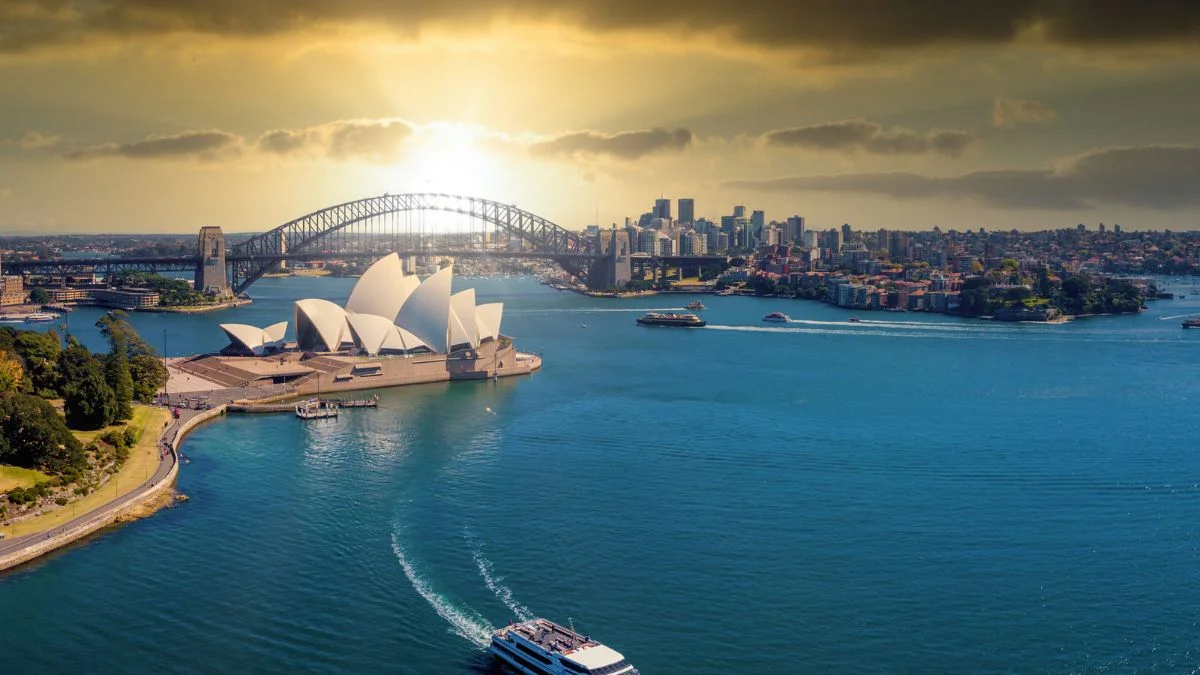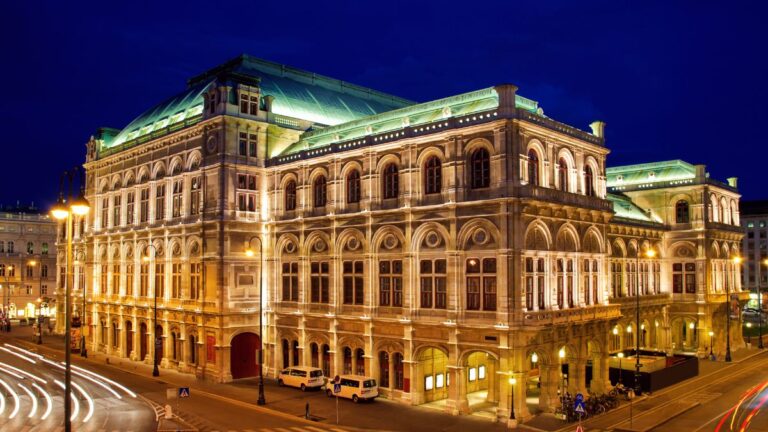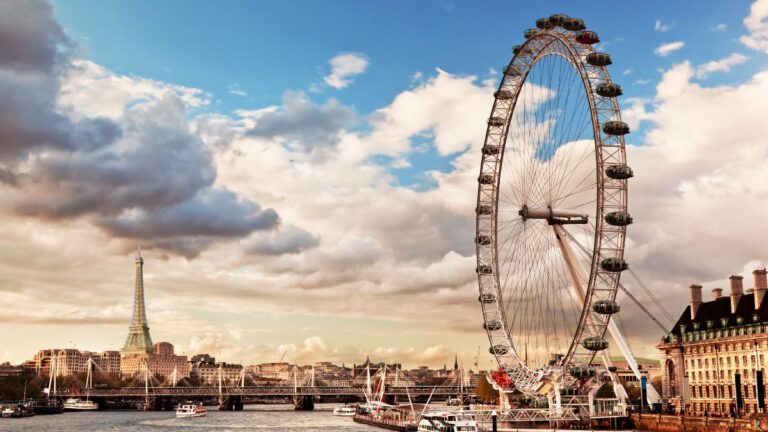50 Facts About Australia You Need to Know Before Traveling There

As participants in Amazon Associates and other programs, we earn from qualifying purchases. This comes at no additional cost to you. For more details, see our Affiliate Disclosure.
Australia, often referred to as the “Land Down Under,” is a country that boasts a fascinating blend of natural wonders, vibrant cultures, and modern cities. As one of the most unique and diverse countries in the world, it offers an array of experiences that cater to every type of traveler. Whether you’re drawn to the rugged Outback, the world-class beaches, the rich Indigenous heritage, or the laid-back urban lifestyle, knowing some key facts about Australia can significantly enhance your visit. Before you embark on your journey to this extraordinary destination, here are 50 essential facts you need to know to navigate the country’s landscapes, understand its culture, and embrace the Australian way of life fully.
1. Australia Is the Sixth Largest Country in the World
Spanning over 7.6 million square kilometers, Australia stands as the sixth-largest country globally, underscoring its vastness and diverse landscapes. This immense size means that it is larger than all the countries of the European Union combined, offering a wide range of climates and ecosystems. From the tropical rainforests of Queensland to the arid deserts of the Outback, Australia’s colossal landmass encompasses a variety of natural wonders, making it a unique travel destination with endless exploration possibilities.
2. It’s Home to the World’s Largest Coral Reef System
The Great Barrier Reef, visible from space, is the planet’s largest coral reef system and one of the seven natural wonders of the world. Stretching over 2,300 kilometers along the northeast coast of Australia, it comprises over 2,900 individual reefs and 900 islands. This biodiverse marine ecosystem harbors thousands of species of marine life, including fish, sharks, corals, and sea turtles, making it a paramount destination for divers and marine enthusiasts from around the globe.
3. Over 80% of Australia’s Animals Are Unique to the Continent
Australia’s wildlife is as unique as its landscape, with more than 80% of its mammals, reptiles, and frogs being endemic to the continent. This includes iconic species such as the kangaroo, koala, and the platypus. Australia’s isolation from other continents has allowed its fauna to evolve in remarkable and distinctive ways, contributing to the country’s rich biodiversity and making it a key interest point for scientists and nature lovers alike.
4. Australia Has Over 10,000 Beaches
With a coastline stretching approximately 59,000 kilometers, Australia is blessed with over 10,000 beaches, more than any other nation. This vast number ensures that beach lovers can find a spot to enjoy, whether they prefer the surf-friendly shores of the Gold Coast, the pristine sands of Whitehaven Beach, or the remote, untouched coastlines of Western Australia. The country’s extensive beaches cater to every preference, from bustling seaside resorts to secluded bays.
5. The Indigenous Cultures of Australia Are Among the Oldest on Earth
Australia’s Indigenous cultures, encompassing Aboriginal and Torres Strait Islander peoples, are among the oldest continuous cultures on Earth, with histories stretching back at least 65,000 years. These rich and diverse cultures are deeply connected to the Australian landscape, with traditions, languages, and knowledge systems that offer invaluable insights into human history and the land’s stewardship.
6. Australia Was Once a Penal Colony
In the late 18th century, the British Empire established Australia as a penal colony, where over 160,000 convicts were transported between 1788 and 1868. This era significantly shaped Australia’s demographic and cultural foundation, as many of these convicts remained in the country after serving their sentences, contributing to its development and diversity.
7. The Great Ocean Road Is One of the World’s Most Scenic Drives
Spanning 243 kilometers along the southeastern coast of Australia, the Great Ocean Road offers one of the world’s most picturesque and dramatic coastal drives. Renowned for its stunning ocean views, lush rainforests, and iconic landmarks like the Twelve Apostles limestone stacks, this route provides an unforgettable journey through diverse landscapes and is a testament to Australia’s natural beauty.
8. Australia’s Ecosystems Range From Rainforests to Deserts
Australia’s vast size and geographic diversity give rise to a wide range of ecosystems, from the dense rainforests of the Daintree to the vast, arid expanse of the Outback. This diversity supports a rich array of flora and fauna, making Australia a prime example of the planet’s ecological variety and a crucial area for conservation efforts.
9. Vegemite Is a National Food Staple
Vegemite, a thick, dark brown Australian food spread made from leftover brewers’ yeast extract with various vegetable and spice additives, has become an iconic symbol of Australian cuisine. Loved by many for its unique, salty flavor, Vegemite is commonly spread on toast and sandwiches, reflecting the nation’s culinary traditions and tastes.
10. The Country Is a Leader in Coffee Culture
Australia has emerged as a global leader in coffee culture, with its cities boasting an abundance of cafes that serve high-quality, artisanal coffee. Australian baristas are renowned for their skill and innovation, having popularized coffee trends like the flat white. The country’s coffee culture is characterized by a strong preference for quality and craftsmanship, making it a coffee lover’s paradise.
11. Surfing Is a Popular Activity Along the Coast
Given its extensive coastline and favorable weather conditions, surfing is a popular and integral part of Australian culture. From world-famous spots like Bells Beach in Victoria to the laid-back surf communities of Byron Bay, the country offers a diverse range of waves that cater to all levels of surfing expertise, making it a top destination for surf enthusiasts worldwide.
12. It’s Home to Some of the Most Livable Cities in the World
Australian cities regularly feature in the top ranks of the world’s most livable cities, with Melbourne, Sydney, and Adelaide often making the list. These cities are celebrated for their high quality of life, vibrant cultural scenes, excellent public transport, and abundance of green spaces, attracting people from all over the globe to live, work, and study.
13. The Australian Alps Get More Snow Than the Swiss Alps
Contrary to the popular image of Australia as a land of beaches and deserts, the Australian Alps in the southeastern region of the country receive more snowfall than the Swiss Alps. This makes Australia a surprising destination for skiing and snowboarding enthusiasts, offering a unique experience of winter sports in a country known for its sunshine.
14. Australia Is the Only Continent Without an Active Volcano
Australia’s geological stability is highlighted by the fact that it is the only continent without any active volcanoes. This rarity is due to the continent’s position away from the edge of the Pacific Ring of Fire, where most of the world’s volcanic activity occurs, contributing to Australia’s unique geological landscape.
15. The Kangaroo and Emu Feature on the National Coat of Arms
The Australian coat of arms features two of the country’s most iconic animals: the kangaroo and the emu. This choice symbolizes a nation moving forward, as neither animal can move backward easily, reflecting Australia’s progress and optimistic outlook.
16. There Are More Than 60 Wine Regions in the Country
Australia’s wine regions are celebrated globally, contributing significantly to the world wine market. With over 60 designated wine regions across the country, Australia offers an impressive diversity of climates suitable for a wide range of grape varieties. Regions such as the Barossa Valley, Yarra Valley, and Margaret River are renowned for producing high-quality wines, including Shiraz, Cabernet Sauvignon, and Chardonnay, making Australia a must-visit destination for wine enthusiasts.
17. The Outback Covers 70% of the Land Area
The Australian Outback, known for its vast, remote, arid landscapes, covers approximately 70% of the country’s land area. This iconic region is characterized by its red sands, unique rock formations, and sparse vegetation, providing a habitat for a wide range of wildlife. The Outback is not only central to Australia’s identity but also offers visitors a glimpse into the heart of the country’s natural beauty and rugged charm.
18. Australia Has a Dual Name System for Many Places
Recognizing the significance of Indigenous cultures and their connection to the land, Australia has implemented a dual naming system for many of its places and landmarks. This system acknowledges both the traditional Indigenous names and the names given by European settlers, emphasizing the country’s commitment to honoring its Indigenous heritage and promoting cultural understanding.
19. The Sydney Opera House Is a UNESCO World Heritage Site
The Sydney Opera House, with its distinctive sail-like design, is one of the 20th century’s most famous and distinctive buildings and a UNESCO World Heritage Site. Designed by Danish architect Jørn Utzon, this architectural masterpiece is a symbol of Australia, showcasing the nation’s cultural and artistic achievements. The Opera House hosts over 1,500 performances each year, attracting millions of visitors from around the world.
20. The Country Operates on Three Different Time Zones
Australia’s vast size means it spans multiple time zones, operating on three main time zones: Australian Western Standard Time (AWST), Australian Central Standard Time (ACST), and Australian Eastern Standard Time (AEST). During daylight saving time, some states adjust their clocks, further diversifying the time zones across the country and highlighting the complexity of managing time in such a large and geographically diverse nation.
21. Cricket Is Considered the National Sport
Cricket holds a special place in Australia’s heart, considered by many as the national sport. The country has a rich cricket history, with its national team achieving significant success in international cricket competitions, including the Cricket World Cup. Summers in Australia are synonymous with cricket, with matches played in backyards, beaches, and internationally renowned stadiums, fostering a strong sense of community and national pride.
22. The Great Barrier Reef Can Be Seen From Outer Space
The Great Barrier Reef, the world’s largest coral reef system, is so vast that it can be seen from outer space. This natural wonder, comprising thousands of reefs and hundreds of islands made of over 600 types of hard and soft coral, is one of the most biodiverse ecosystems on the planet. It’s not only a critical habitat for marine life but also a significant scientific and environmental treasure, emphasizing the need for conservation efforts to protect it from threats such as climate change and coral bleaching.
23. Australia Is Home to the World’s Oldest Fossil
Australia boasts the discovery of the world’s oldest known fossils, stromatolites, which are over 3.5 billion years old. Found in Western Australia, these fossils provide invaluable insights into the Earth’s early life and the evolution of our planet’s biosphere. Their presence underscores Australia’s significance in the scientific community, contributing to our understanding of life’s origins and the early environment.
24. The Whitsunday Islands Are Made Up of 74 Island Wonders
The Whitsunday Islands, located in the heart of the Great Barrier Reef, comprise 74 stunning islands that offer some of the world’s most beautiful natural landscapes. These islands are famed for their crystal-clear waters, pristine beaches, and lush rainforests, making them a paradise for sailors, snorkelers, and nature lovers. The unparalleled beauty of the Whitsundays, including the world-renowned Whitehaven Beach, epitomizes the natural wonders that make Australia a premier destination for travelers.
25. The Australian Dollar Is the Currency
The Australian dollar (AUD) is the official currency of Australia, including its external territories. Introduced in 1966 to replace the Australian pound, the currency is now one of the most traded in the world. The Australian dollar’s stability and the country’s strong economy make it a significant player in global financial markets, reflecting Australia’s economic position on the world stage.
26. English Is the Official Language, But Over 200 Languages Are Spoken
English is the de facto official language of Australia, serving as the primary language of communication and media. However, reflecting the nation’s multicultural society, over 200 languages are spoken across the country. This linguistic diversity includes Indigenous languages as well as languages brought by immigrants from all over the world, showcasing Australia’s rich cultural tapestry and its history of migration and settlement.
27. The Country Has a Significant Camel Population
Australia is home to the world’s largest population of wild camels. Initially introduced in the 19th century to aid in the exploration and development of the country’s vast interior, these camels have thrived in Australia’s arid regions. Today, they are considered both a unique attraction and an environmental challenge, as their large numbers have an impact on native ecosystems.
28. Uluru (Ayers Rock) Is Sacred to Indigenous Australians
Uluru, also known as Ayers Rock, is a massive sandstone monolith in the heart of the Northern Territory’s arid “Red Centre.” Sacred to Indigenous Australians, particularly the Anangu people, Uluru is deeply embedded in Aboriginal culture and spirituality. The site is also a UNESCO World Heritage Site, recognized for both its natural and cultural values, and attracts visitors from around the globe who come to witness its majesty and learn about its rich Indigenous heritage.
29. Australia Has the World’s Largest Sand Island
Fraser Island, located along the southern coast of Queensland, is the largest sand island in the world. Stretching over 120 kilometers in length, it’s known for its unique dunes, rainforests growing on sand, and pristine freshwater lakes. Fraser Island is a UNESCO World Heritage Site, celebrated for its exceptional natural beauty and its importance as a habitat for a range of rare and endangered species.
30. The Tasmanian Devil Is Real and Native to Australia
The Tasmanian devil, often known for its ferocious temperament and loud, disturbing noises, is a carnivorous marsupial native to Australia, found in the wild only on the island state of Tasmania. Despite its fierce reputation, the Tasmanian devil is currently facing a battle for survival, with a contagious cancer known as Devil Facial Tumour Disease (DFTD) significantly impacting its population.
31. The Dingo Fence Is the Longest Fence in the World
Spanning approximately 5,614 kilometers, the Dingo Fence is the world’s longest fence. Built in the late 19th century, it was designed to protect the southeastern Australia’s sheep flocks from attacks by dingoes (wild Australian dogs). The fence runs from Jimbour on the Darling Downs in Queensland to the cliffs of the Nullarbor Plain, making it one of the most significant pest-exclusion barriers in the world.
32. Melbourne Was Once the Richest City in the World
During the Victorian gold rush of the 1850s, Melbourne rapidly transformed into one of the world’s largest and wealthiest cities. This era of prosperity left a lasting mark on the city, evident in its grand Victorian architecture, expansive parks, and a vibrant cultural scene. Today, Melbourne is renowned for its liveability, diverse communities, and as a center for arts, education, dining, and sports.
33. The Box Jellyfish, Found in Australian Waters, Is the Most Venomous Marine Animal
The box jellyfish, particularly the species known as Chironex fleckeri, found in the waters of Northern Australia, is considered the most venomous marine animal in the world. Its sting can cause extreme pain, and in some cases, it is fatal to humans. Awareness and prevention measures, including wearing protective clothing and heeding local warnings, are crucial for safety in affected areas.
34. Australia Was the Second Country to Grant Women the Right to Vote
Australia was at the forefront of women’s suffrage, becoming the second country in the world to grant women the right to vote in 1902, shortly after New Zealand. This landmark decision was a significant step forward in the global fight for gender equality and demonstrated Australia’s progressive stance on women’s rights and social reform.
35. The Sydney Harbour Bridge Is Known as the “Coathanger”
The Sydney Harbour Bridge, an iconic feature of the Sydney skyline, is affectionately known as the “Coathanger” due to its arch-based design. Opened in 1932, this engineering marvel is the world’s largest steel arch bridge, providing a critical link between Sydney’s northern and southern shores. The bridge not only serves as a vital transportation artery but also as a popular attraction for visitors, offering spectacular views of the harbor and the Sydney Opera House.
36. The Great Barrier Reef Is Larger Than the United Kingdom, Holland, and Switzerland Combined
Highlighting its immense scale, the Great Barrier Reef covers an area greater than the United Kingdom, Holland, and Switzerland combined. This vast marine ecosystem is composed of thousands of reefs and hundreds of islands, forming the largest structure on earth made by living organisms. Its sheer size and biological diversity make it a cornerstone of global marine life, emphasizing the critical need for environmental protection and conservation efforts.
37. Bondi Beach Is One of the Most Famous Beaches in the World
Bondi Beach, located in Sydney, is not just a beach but an icon of Australian culture and lifestyle. Known worldwide for its golden sands, vibrant community, and lively surf, Bondi Beach epitomizes the Australian beach experience. It’s a hub for surfers, sunbathers, and tourists alike, hosting a variety of events throughout the year, from art exhibitions to lifesaving competitions, reflecting the dynamic and inclusive spirit of Australia’s coastal life.
38. Australia Participates in “Eurovision”
Despite its geographical location, Australia has been a passionate participant in the Eurovision Song Contest since 2015, reflecting its strong Eurovision fan base and cultural ties to Europe. Australia’s involvement highlights the country’s diverse and inclusive cultural identity, as well as its love for music and performance arts. The nation’s participation in Eurovision showcases its global connectivity and willingness to engage with international communities through the universal language of music.
39. The Country Is Known for Its Unique Slang and Expressions
Australian English is distinctive, marked by a rich tapestry of slang and expressions that can sometimes perplex non-natives. Terms like “G’day” for hello, “fair dinkum” for genuine, and “thongs” for flip-flops are just a few examples of Australian vernacular. This unique linguistic flavor adds to the charm and character of the Australian identity, embodying the nation’s laid-back and friendly ethos.
40. It Has a Population of Over 25 Million People
Australia’s population exceeds 25 million, a diverse mosaic of cultures reflecting its history of immigration. This multicultural society is one of Australia’s strengths, with nearly half of Australians either born overseas or having at least one parent who was. The rich cultural diversity is evident in every aspect of Australian life, from its culinary scene to its festivals, enhancing the country’s vibrancy and global perspective.
41. The Continent Is Moving Northeast by Approximately 2.7 Inches Per Year
Australia sits on the fastest-moving continental tectonic plate in the world, drifting northeast at a rate of about 2.7 inches per year. This movement is due to the shifting of tectonic plates that make up the Earth’s crust. While gradual and largely imperceptible in human terms, this drift has implications for mapping, navigation, and satellite data, requiring periodic adjustments to maintain accuracy.
42. Canberra Is the Capital, Not Sydney or Melbourne
Canberra, the capital city of Australia, was purpose-built in the early 20th century as a compromise between the two rival cities, Sydney and Melbourne. As the seat of the federal government, Canberra is home to Parliament House, the High Court, and numerous national institutions, including museums and galleries. Designed by American architect Walter Burley Griffin, Canberra is known for its green spaces, planned layout, and geometric motifs, reflecting the ideals of the Garden City movement.
43. The Echidna and Platypus Are the Only Egg-Laying Mammals Known as Monotremes
Australia is home to the world’s only monotremes, or egg-laying mammals: the platypus and the echidna. These unique creatures confound traditional mammalian classifications, combining reptilian and mammalian traits. The platypus, with its duck-bill and webbed feet, and the echidna, with its spiny coat and snout, are both native to Australia, embodying the country’s distinctive and diverse wildlife.
44. Australia Has a Public Holiday Called “Australia Day”
Australia Day, celebrated on January 26th, marks the anniversary of the 1788 arrival of the First Fleet at Port Jackson in New South Wales. However, the day is also a point of contention and reflection, as it represents the beginning of British colonization and the subsequent impact on Indigenous Australians. Recognized as a public holiday, Australia Day is observed with ceremonies, festivities, and discussions, highlighting the nation’s complex history and diverse society.
45. The Country Is a Constitutional Monarchy
Australia operates as a constitutional monarchy within the Commonwealth of Nations, recognizing Queen Elizabeth II as the head of state. Her representative in Australia, the Governor-General, performs various ceremonial duties. Despite debates about becoming a republic, the constitutional monarchy remains, reflecting Australia’s historical ties to the United Kingdom and its political evolution.
46. The Black Box Flight Recorder Was Invented in Australia
The black box flight recorder, a crucial device for aviation safety, was invented by Australian scientist Dr. David Warren in the 1950s. This invention has become an indispensable tool for investigating aviation accidents, helping to improve safety standards worldwide. Australia’s contribution to this vital aspect of air travel underscores its commitment to innovation and global safety.
47. Australians Consume Over 260 Liters of Beer Per Person Annually
Beer is an integral part of Australian culture, with Australians consuming over 260 liters per person annually. This statistic highlights the social and recreational importance of beer in Australia, from casual barbecues to sports events. The country boasts a thriving beer industry, ranging from traditional big brands to a growing craft beer scene, reflecting Australians’ love for a cold brew.
48. The World’s First Feature Film Was Produced in Australia
In 1906, Australia produced “The Story of the Kelly Gang,” recognized as the world’s first full-length feature film. This silent film, which chronicles the life of the infamous Australian outlaw Ned Kelly, marked a significant milestone in cinematic history. Australia’s early adoption and innovation in film set the stage for its vibrant film industry today, which continues to contribute significantly to the global entertainment landscape.
49. The Wi-Fi Technology Was Partially Developed by Australian Scientists
Wi-Fi technology, which has revolutionized the way the world communicates, was partially developed by Australian scientists from the Commonwealth Scientific and Industrial Research Organisation (CSIRO). Their pioneering work in radio astronomy led to the invention of a method to enhance wireless network quality, underscoring Australia’s role in this critical global technology.
50. The Rainbow Serpent Is a Key Figure in Indigenous Australian Mythology
The Rainbow Serpent is a fundamental and revered figure in Indigenous Australian mythology, symbolizing the creation of the landscape and its features across various Aboriginal cultures. Representing fertility, the cycle of seasons, and the connection between the spiritual and natural world, the Rainbow Serpent’s stories vary but consistently reflect the deep spiritual and cultural connections Indigenous Australians have with the land.






